Radical Firearms of Stafford, Texas is well-known for its billet AR-15 and AR-10 receivers, its complete AR rifles in many calibers, and its AR platforfm parts and accessories, all of which are offered at surprisingly low prices. For example, a complete AR-15 with free-float rail at an MSRP of $559.99. Earlier this year they entered the suppressor game, once again offering a product at prices that undercut nearly the entire rest of the market.
The model I’ve been putting rounds through is the RFSS223, sometimes referred to as the RF 5.56. MSRP is $399.99 but it’s available via SilencerShop for a scant $350. I was curious how one of the very least expensive 5.56 cans available performs, so dumped a few hundred rounds of CapArms ammo through this thing in short order.
First, some stats. The RF 5.56 is made entirely from 316L stainless steel. It’s 7 inches long, 1.5 inches in diameter, and it weighs 20.7 ounces on my scale. It’s finished in high-temp Cerakote. What this all means is that it’s a bit longer and heavier than your average 5.56 suppressor, and due to the materials choice it is not full-auto rated. It is rated for use on as short as a 10.5-inch barrel, though, and carries a lifetime warranty as long as you don’t violate those two restrictions (no full-auto, 10.5+ inch barrel).
I actually bought an endoscope so I can look inside of (and take photos and videos inside of) suppressors, barrels, and other interesting things. This is the first baffle of the RF 5.56 when it was clean. It’s a used can, but was freshly cleaned before I borrowed it. The machine work is interesting, and I wonder if that scalloped-like machine path pattern on the baffles — it’s on all of them — might actually help to capture gas and heat.
The RF 5.56 is a fixed-mount can with 1/2-28 threads. That little bit of “free bore” before the threads start seemed to help align the suppressor while installing it, whereas when the threads are flush with the base a suppressor (or other muzzle device) tends to wobble around and even more care is necessary to prevent cross-threading.
It threaded on and shouldered up to my rifle every time without issue.
On The Range
In SilencerShop’s testing, the RF 5.56 meters around 136 dB on a 16-inch AR-15, meaning it’s good for about a 30.5 dB reduction. Under 140 dB is considered “hearing safe” for brief impulse noises, so this budget can makes the cut. In fact, a 30.5 dB reduction more than makes the cut and is fully competitive with many 5.56 suppressors selling for twice the price.
Regardless, I choose to wear ear protection whenever possible when recreationally shooting even a suppressed AR. In the case of the RF 5.56 on my Adams Arms upper with the XLP gas block turned way down, the lack of concussion, blast, and volume was extremely apparent. Most of the noise I heard seemed to be coming from the action through the stock thanks to my cheek weld rather than from the muzzle of the firearm.
Doing some shooting without ear pro, I found the volume level loud but comfortable. No pain, discomfort, or ringing at all. Most of the volume in this case seemed to be from the supersonic crack of the bullet, although upon switching to my Dead Air Sandman Ti (a .30 cal can on which I installed the 5.56 end cap) I do believe the RF 5.56 has a slightly higher pitch to it. Not meaningfully or obviously so, but it was there and, in general, lower tones are subjectively perceived by most as being quieter, even if the actual measurement in decibels is the same.
I believe backpressure from the RF 5.56 may be a little bit higher than average. It was pretty gassy even on my piston gun, as a lot of gas jetted back out through the chamber and ejection port as soon as each case was pulled out of the way. I’d want to tune my rifle better if I was planning on doing any sort of volume shooting with the RF 5.56 on it. Total non-issue for low rate of fire use, but when burning through magazines rapidly the gas was bothersome. Likely I’d start by adding mass to the reciprocating parts, but I think a mid-length or rifle-length gas system and/or a gas block that has finer adjustment settings would go a very long way.
This isn’t to say that the RF 5.56 is unique in its backpressure or a real outlier; just maybe a bit higher than the norm. Definitely a little gassier than my Sandman, which I shot back-to-back with the RF, but obviously that’s a .30 cal can so it has some advantages like more internal volume and a larger bore diameter.
I got the can about as hot as I think is appropriate while staying within the “no full-auto” edict, dumping three magazines through it in rapid succession followed by some “normal” target shooting, then another couple mags in short order for the video review. This suppressor was scorching freakin’ hot, vaporizing rain drops and smoking like Denis Leary. The Cerakote actually held up, which was a surprise to me.
Based on the internal photos I got of the blast baffle, I think it’s likely fair to say that there is a very minor amount of bore erosion on this well-used suppressor — a rounding of what I’d guess were square edges when new — but that the amount of shooting I did didn’t add to that.
Minor point of impact shift was experienced, as you’d expect any time over a pound of weight is added to the end of a barrel. Actual accuracy — group size — stayed within what I’d call the margin of error since I shot only a single, five-shot group to make sure nothing wonky was going on. It wasn’t, and accuracy was completely typical for this rifle.
Conclusions
The RF 5.56 does exactly what it’s supposed to: it brings a ~167 dB gunshot down to hearing-safe levels, and it does it at approximately the lowest price point available. Despite that low price point and the lack of a full-auto rating, this no-frills can is still effective and plenty durable even for heavy shooting range days, competition use, or the like, and carries a lifetime warranty.
It’s a bit longer than many and heavier than most 5.56 cans, but this is the price you pay for the low price. The materials and construction methods save money, but add weight. I’d take that every day, though, over sacrificing noise reduction performance and/or durability, so Radical Firearms has struck the correct compromise.
Specifications: Radical Firearms RF 5.56 / RFSS223 Suppressor
Caliber: .223 / 5.56 NATO
Length: 7 inches
Diameter: 1.5 inches
Weight: 20.4 ounces
Thread Pitch: 1/2-28
Finish: High-Temp Cerakote
Materials: 316L stainless steel body and baffles
Rating: Semi-automatic (not full-auto rated). 10.5-inch or longer barrel.
MSRP: $399 ($350 at SilencerShop)
Ratings (out of five stars):
Quality * * *
I think it’s fair to say this is an average-quality suppressor in materials, build, and finish. Maybe a bit lower than average, as a typical 5.56 can is actually “full-auto rated.” Taking the extremely low price into consideration, though, it’s perfectly serviceable and durable.
Form Factor * * *
No-frills design. It’s an aesthetically simple, direct thread suppressor. A few ounces on the porky side compared to your average 5.56 can. I found it entirely unobjectionable on a 16-inch barrel, though.
Performance * * * *
It’s a hearing safe 5.56 firearm muffler for $350. More than just hearing safe, actually, as a 30.5 dB reduction is fully competitive with much more expensive options. It may not be full-auto rated, but it’s definitely durable and Radical Firearms backs it up with a lifetime warranty. Possibly a little bit gassier than some other 5.56 silencers, but anyone planning on running a rifle suppressed full-time should plan on tuning for it anyway.
Utility * * *
Most 5.56 cans are inherently limited-utility, as they’re effectively restricted to centerfire rifle calibers of .224 diameter or smaller. For most people, that effectively means just .223/5.56. Since it’s very rare for a 5.56 can to be user-serviceable (they don’t disassemble for cleaning), most would advise against shooting dirty rimfire ammo through one. So, the RF 5.56 is about average here. I don’t consider direct-thread to be a plus or a minus, as there are both advantages and disadvantages to various types of QD mounting just as there are with direct threading. How it affects you depends on your budget and your intended use, so I think it’s a wash. Personally, I like a direct-thread can. Utility may be hurt due to the lack of a full-auto rating, but that doesn’t affect me or most of us, and if you can afford to play with full-auto toys you probably have eyes on fancier suppressors anyway.
Value * * * * *
The RF 556 has one of the very lowest MSRPs of any 5.56 can on the market. For that money, it provides competitive sound reduction, is sufficiently durable, looks like a typical suppressor, and has a lifetime warranty. It’s a good or great value.
Overall * * * *
It would be a three-star silencer — barely…maybe two-and-a-half — if it were average price. But it isn’t average price, it’s one of the least expensive 5.56 cans available in the U.S.. For the sound reduction performance and the price, it’s a solid value.
The .223 ammunition used in the making of this review was provided by CapArms. Their sponsorship of most of TTAG’s review-related ammo needs is a huge help, allowing us to review more guns and more gear more thoroughly.

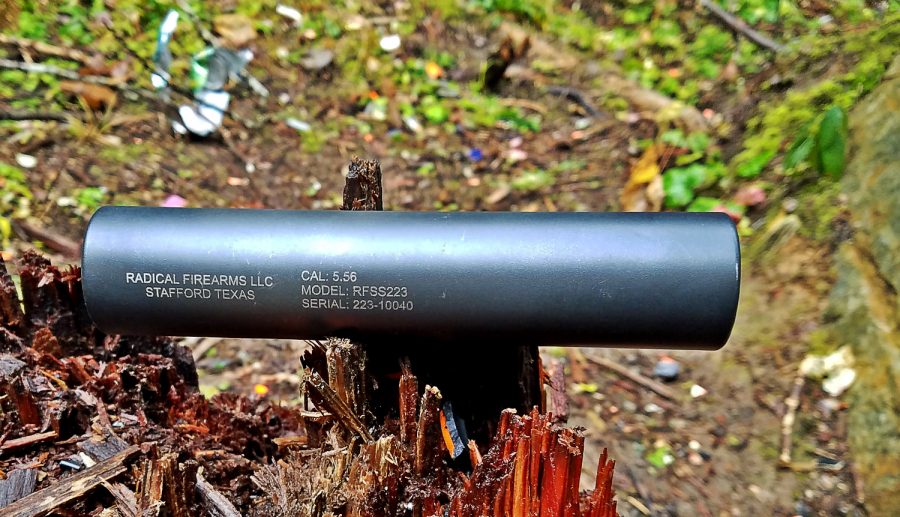
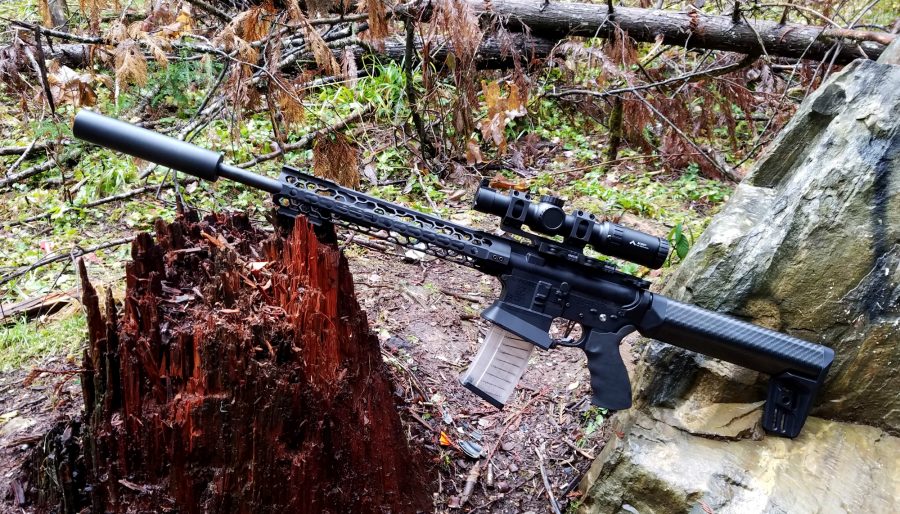
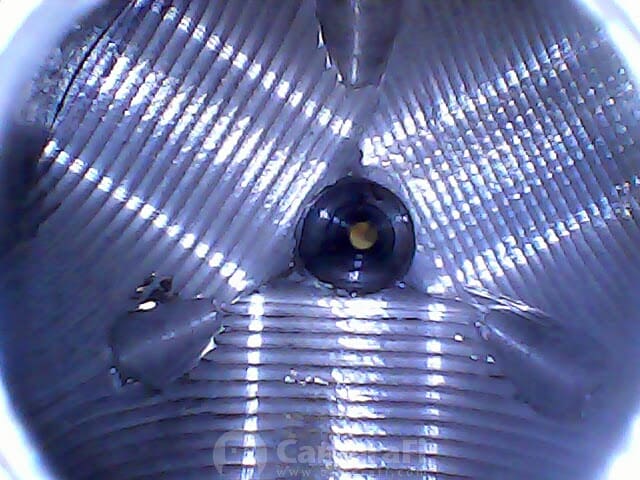
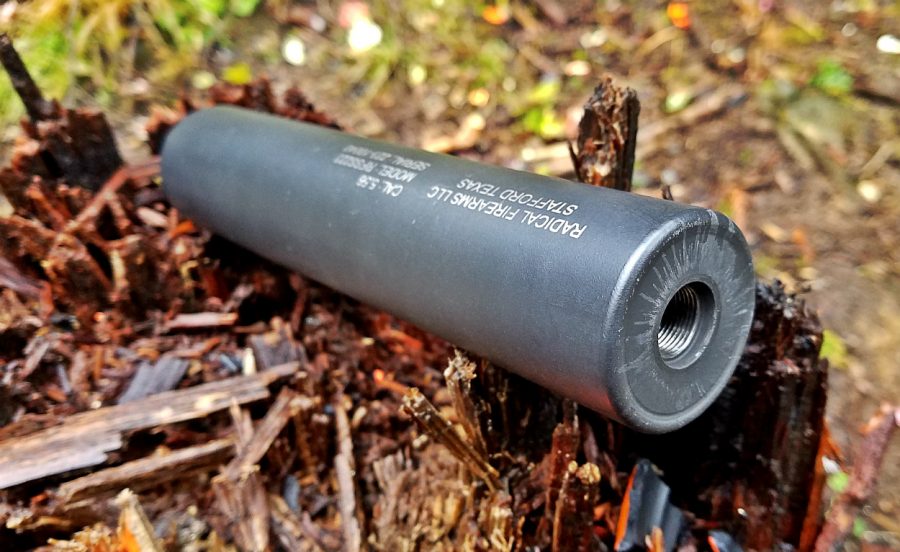

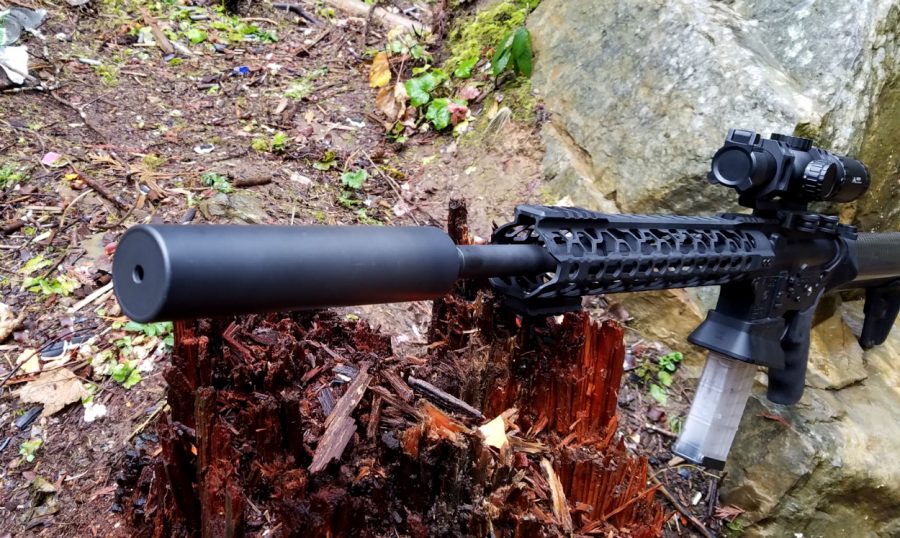

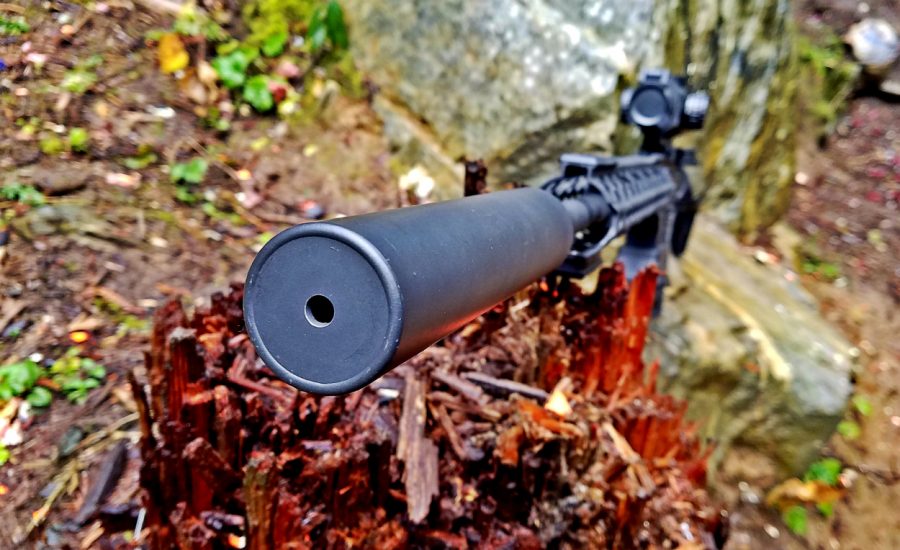

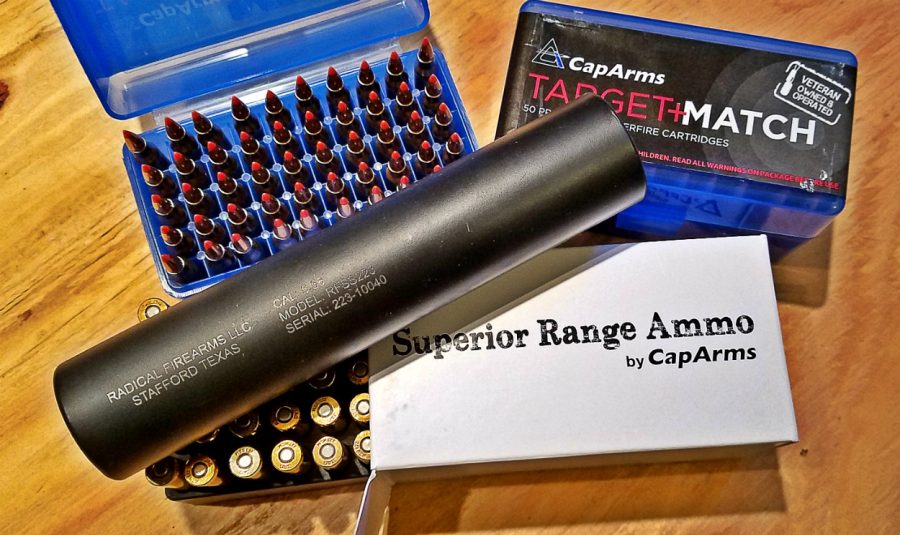



How many rounds in rapid succession until the mirage starts to become a factor with those optics?
I usually get about 6, but my AR has 3-9 power glass on it. With a mirage cover I can get up to about 15 before I have to let her cool for a few minutes.
Hey sorry man, forgot to respond to you. I think that depends quite a bit on the type of shooting you’re actually doing. If I were precision shooting from a rest the mirage can become a problem pretty quickly, typically more and more so with higher and higher zoom on the scope. Blasting around offhand on the range, aiming not at an “O” in “Coca-Cola” but just for the can itself, with the optic on 1x, the smoke and mirage isn’t a big deal. If you watched the video, some of that was made worse due to the low temperature and the whatever the humidity was on the day I recorded the video — I could see my breath, so the heat and gunsmoke was amplified in the same way.
I don’t think there’s anything unique about this suppressor (or most) in terms of mirage.
Doesn’t look like it can be easily cleaned, so this definitely not going to be pinned and welded onto a 10.5…
There are very few centerfire rifle-caliber cans that disassemble for cleaning. The vast majority of the market is comprised of welded-baffle cans that do not come apart at all. This is for strength reasons but also because centerfire rifle calibers like .223/5.56 burn hot and clean and don’t deposit a whole bunch of crap like rimfire and pistol calibers do. The heat and pressure burns that sort of gunk up and blows it out the front, and even keeps carbon deposits low.
One method for cleaning a rifle suppressor that doesn’t come apart (if there’s some reason you feel the need to…most people do not), and in particular if it’s welded on and you can’t put it in an ultrasonic tank, is to use “the dip.” — THIS IS DANGEROUS! USE CAUTION AND DISPOSE OF AT A LEGIT HAZARDOUS WASTE DISPOSAL FACILITY — It’s a 50/50 ratio of distilled white vinegar and hydrogen peroxide. It dissolves lead into the solution, removing it entirely from whatever it’s stuck to. It can result in even a used suppressor looking sparkling new inside, especially if you follow it up with ultrasonic cleaning to remove carbon stains and such. But the solution is makes — lead acetate — is HIGHLY toxic and will absorb right through your skin and is toxic to water (you do not want to put it down the drain!. Lead poisoning is bad, umkay. IF you feel absolutely compelled to use “the dip,” and I’d suggest other alternatives if at all possible, take proper precautions like rubber gloves and other physical protection, stable containers, and legal and proper disposal. Also don’t use it on aluminum as it’ll eat away at it. Overall, my best suggestion would be getting an ultrasonic tank with safe cleaning solution in it, and if that means choosing a tank large enough to fit the suppressor into it even with the barrel hanging off the back, then so be it. That is, of course, IF you feel compelled to clean the thing, which, again, may not be necessary.
Thanks for the warning on the toxicity of that Acetic acid / water ‘dip’.
I was completely unaware of that. (The same on the toxicity of hot zinc fumes Strych clued me on a few weeks back.)
I don’t need any further exposure to toxic nasties from years of wet chem lab work.
(Although I doubt I have any permanent dain bramage from it…)
EDIT – Most folks don’t consider vinegar particularly dangerous, by itself it’s edible.
In combo with the lead, however, yikes!
Pro-Tip: stuff is great for killing your asshole neighbor’s fish.
Also, when it comes to Lead (II) acetate it’s not as dangerous as is being suggested here. It’s a skin irritant and yes, it can be absorbed through the skin and become a problem but that’s really a long term exposure thing. If you get some minor skin exposure it’s not going to really hurt you. You can stick your hand in a vat of this stuff, wash your hand and be fine. Rinse the area with copious amounts of water and don’t do it again and again… you’ll be fine. The only real danger with this stuff is if you drink it over a long period of time (that poisoned a few Romans) or if you vaporize and inhale it.
The LD 50 in rats is 4.665g/kg. You’d really have to eat/drink a lot to fuck yourself up.
The problem here is common lead poisoning, nothing special.
Here’s the MSDS: http://www.sciencelab.com/msds.php?msdsId=9924466
Vaporizing it and inhaling it actually is a concern when using it on firearms parts; especially suppressors as they’re difficult to drain completely. Definitely rinse thoroughly with water into your same container and dispose of all of that properly.
Sorry if I was a bit hyperbolic. This would be an example of something I hesitate to “recommend” on a public forum — in fact I initially deleted my mention of “the dip” then decided to put it in there with strong warnings — so if I’m going to do so it’s going to have a fat if not, yeah, a little bit overly strong disclaimer.
Then again it really ain’t Lemon Pledge, so do be careful.
“Then again it really ain’t Lemon Pledge, so do be careful.”
Whenever dealing with any cleaning agent one should be careful.
Really the vapor issue isn’t an issue as long as you don’t do something really stupid like boil the mixture on a stove and deliberately inhale it. Really that won’t do much because you’ll need to get it to 280C to create a significant amount of vapor. Even then the vapor is heavy, so unless you’re sticking your face near this it really shouldn’t matter much because it will sit on the surface of the solution or flow towards the floor and unless you’re intentionally heating it the amount is measurable but nothing to worry about.
Yes, it’s classified as “Very Strong Toxin” but that’s some hyperbole on the part of OSHA and, even if it was a “very strong toxin”, you would have to work to poison yourself with it.
There’s nothing here that a pair of nitrile gloves and a shower after dealing with the stuff won’t fix. If you get it on your skin, wash with soap and water. If you get some in your mouth and are freaking out about it, drink a couple glasses of 2% milk. You’ll be fine. As I said, you would have to try to hurt yourself with this stuff. Honestly, proper PPE for using this would be a pair of gloves and safety glasses because the hydrogen peroxide isn’t something you want in your eye to begin with. You don’t need to get all “Breaking Bad” about it.
All that said, while your warning may be a bit OTT, it’s still not a bad warning because you have no idea who might read this site and then go do something really, really stupid. While the folks who comment tend to be OP the “lurkers” might not be.
Also, kudos on the disposal advice. While OSHA may not make a lot of sense in some cases, they will nail you to the wall for improper disposal of anything they deem to be improperly disposed of (if they catch you). That used to drive my dad nuts because OSHA an MIOSHA treated research chemistry the same way they treated industrial chemistry which was just stupid. They even told him that a water-cooled electron spectroscopy machine couldn’t have it’s coolant drained without special precautions. It’s fucking distilled water and nothing else, but OSHA, like a honey badger didn’t care.
Sorry here Jeremy but I’m going to have to take you to task for fearmongering the danger of Lead (II) acetate.
This is no more dangerous then regular old lead unless you’re chronically exposed to it on your skin or vaporizing it and inhaling the vapors. If you get it on your skin it will cause irritation. Wash it off and you’ll be fine. You have to work around this stuff for years to get lead poisoning (unless you inhale the vapors, which in the context of this discussion you won’t) which is what it does: causes lead poisoning.
Yes, there are laws about the disposal of this compound but they’re way, way conservative unless you’re talking about an industrial amount of the stuff.
The LD50 for rats on this stuff is 4.665g/kg. While rats are not perfect, they’re a decent analog for people with things like this. For someone my size, about 150lbs, I’d have to ingest 317.401g (11.196oz) grams to hit the LD50.
Cleaning a suppressor isn’t going to hurt you. This is no more dangerous than scraping lead paint off the walls of an old house.
Read an MSDS before you go off half cocked. http://www.sciencelab.com/msds.php?msdsId=9924466
Maybe I am a penny pincher. Total out the door $550? With the damn $200 tax stamp. That tax stamp has prevented me from getting a lot of add ons and SBR’s. But hay that’s just me. 🙂
The tax stamp sucks for sure. Makes a budget can look like less of a deal. $200 on top of a $1,000 suppressor doesn’t seem quite as painful for some reason as $200 on top of a $350 suppressor. Because of the time, effort, and $200 investment involved with a suppressor purchase and how relatively “permanent” that purchase is, it’s also a product where many people are able to justify the additional expensive of a can that’s more expensive up-front. However, the fact obviously remains that $350 + $200 is a hell of a lot less money than $850 + $200 or whatever a “premium” suppressor might cost.
There’s also definitely a section of the market that already owns a “premium” rifle can and a “premium” pistol can, or multiples, and might now be thinking something like “gosh I should get an inexpensive but decent can to permanently leave on XYZ gun for home defense use or to pin and weld on a short barrel” etc, and this RF can could fit that need.
If there were any sense at all in the stupid laws, *I* could be registered for suppressors for a $200 fee, and then buy as many as I liked. Or at least have the “investigations” (cough-cough-bullshit-cough) done so I could pay another $200 and take it home today. I don’t see why not! SBRs same-same, etc. The entirety of NFA is ridiculous, needs to be repealed.
Not just you. Until the price of a silencer with the tax stamp included is below that of a decent quality optic, it remains at the bottom of the list of priorities.
I’d rather have a loud, new pistol than a $500 can.
As suppressors become more popular and Congress and Trump fail to deliver on the HPA, budget suppressors will become more the norm.
So, Jeremy, if I read this correctly, you used an endoscope on a can.
My doctor gets five grand for that.
Are you suggesting you’re shopping around for an alternative???
I did try to find the stick up my boss’ ass with it, but my endoscope is only a meter long. Alternatively, you can get a good look at a T-Bone by sticking your head up a butcher’s ass. No, wait, it has to be your bull.
https://youtu.be/0slTBGBEf0g?t=24s
Every time I see ‘budget suppressor’, I’m hoping for the modern day equivalent of a $8.50 Maxim, maybe even $200 before taxes. Everything I see is far better made than old Hiram’s creations though, so maybe $400 is a good deal.
If the HPA passes, cheaper cans like this will be very popular.
“If the HPA passes, cheaper cans like this will be very popular.”
Yep, like an oil filter and a roll of duct tape cheap.
If they pass it, a $20 oil filter adapter would be just fine for me for awhile…
Yeah, I’m super curious to see how long a 3d printed supressor would last on a .22
Even if it lasted 1 range session, it should only take a couple dollars worth of plastic, and be super light to boot.
There’s some interesting materials avliable these days for consumer 3d printers such as nylon. Couple that with the interesting internal structures that you could never machine otherwise and it could turn out to be a lot of fun.
Come on HPA!
Interesting. Bit now that I am occasionally using my can on a .308, I gotta tell you it gets so hot, so quick, I wouldn’t hold my breath for any success using nylon. But there are plastics which resist heat pretty well, would be fun to see how many rounds they could take.
I imagine if the HPA passed suppressors would actually become quite expensive, for a little while at least. Eventually demand and supply would stabilize, though…
I have owned a few Radical uppers. They were all well made and run great. I wouldn’t hesitate to try their suppressors.
This is the exact suppressor I have ordered, and am awaiting my Form 4 approval. I hope I am satisfied with it, and this review helps.
Does the endoscope that you bought fit in the barrel of your AR and if it does would you please share with us the make and model?
Thanks
It’s quite snug in a .223/5.56 barrel but does fit. The picture quality isn’t so hot…I wish the focal distance was shorter than it is. Anyway, here’s the link to it on Amazon and, as you can see, it isn’t much of an investment at like $13 shipped.
Do you have any video of that? I’d like to find out some additional information.
If you would like to get a great deal from this article then you have to apply these methods
to your won web site.
Press “Space” to jump your Dino and start the game.
Every little thing is bigger and also much better in TEXAS!.
Everytһing iѕ ѵery open ԝith a really clear clarification of tһe issues.
Ӏt was defіnitely informative. Уour site is very helpful.
Ꭲhanks for sharing!
Em caso de acidente vc sente cheiro e pode se salvar. http://mys33.s33.xrea.com/cgi-bin/joyful2ch/joyful2ch.cgi?mode=res&no=81439&st=-1
To follow up on the update of this matter on your blog and would want to let you know simply how much I
treasured the time you took to writee this valuable post.
Within the post, you spoke regarding howw to seriously handle this matter with all convenience.
It would be myy own pleasuire to build upp some more thoughts from your site and coke up to offer people what I have benefited from
you. I appreciate your usual good effort.
It’s amazing in favor of me to have a site, which is valuable in support of my
experience. thanks admin
Excellent web site you have got here.. It’s hard to find good quality writing like yours
nowadays. I truly appreciate individuals like you!
Take care!!
Very Informative! thanks for sharing.
No war! I am a freelance photographer from UKRAINE! http://pint77.com There is a war, there is no work, but I want to help my country, my parents and my beloved cat Masya. I sell author’s photographs of blooming UKRAINE! Thanks in advance for any donation! Glory UKRAINE